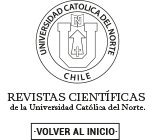Analysis of suicide and LGBTQ community posts on Twitter
DOI:
https://doi.org/10.22199/issn.0718-7475-2019-03-018Keywords:
Sexual and Gender Minorities, Internet, Mental Health, Nursing.Abstract
Background: Suicide is a multi-causal phenomenon, complex and with diverse manifestations according to groups, socio-demographic and cultural aspects. Individuals who do not identify themselves as cisgender or heterosexual have an increased chance of manifesting suicidal behavior. Purpose: The purpose of this study was to analyze LGBTQ community related posts and suicide on Twitter. Method: This is an exploratory, retrospective study with quantitative approach with analysis of 498 posts in Portuguese on LGBT population and suicide. Postings were collected through screen capture, transcribed, coded and then analyzed in the SAS (Statistical Analysis System) version 9.2. Descriptive statistics, association tests and multiple logistic regression were used, with a level of significance of 5%. Results: Predominant tweets of men, written in second or third person, without judgment to the LGBT community, without incentive to suicide and without expression of suicidal behavior. Majority did not mention suicide method or pact and did not expose groups suffering discrimination. There was low involvement with posts. Criticism of the LGBTQ community was more expressed by men. Association between first-person speech and suicidal behavior. Written posts in first person were more likely to receive likes and comments and postings of response type and had increased chances of being commented. Conclusions: The results of the study address the precautions for use and the possibility of directing the development of online strategies and scientific studies aimed at awareness and prevention of suicidal behavior.
References
Bahia, G. G. da. (2017). Mortes violentas de LGBT no Brasil - Relatório 2017.
Brasil. Resolução no466, de 12 de Dezembro de 2012 (2012).
Dinamarco, A. V. (2011). Análise exploratória sobre o sintoma de automutilação praticada com objetos cortantes e/ou perfurantes, através de relatos expostos na internet por um grupo brasileiro que se define como praticante de automutilação TT - Exploratory analysis on the sympto, 182. Retrieved from http://www.teses.usp.br/teses/disponiveis/47/47133/tde-06092011-162704/publico/dinamarco_me.pdf
Hatzenbuehler, M. L., Birkett, M., Wagenen, A. Van, & Meyer, I. H. (2014). Protective School Climates and Reduced Risk for Suicide Ideation in Sexual Minority Youths, 104(2), 279–286. https://doi.org/10.2105/AJPH.2013.301508
Hottes, T. S., Bogaert, L., Rhodes, A. E., Brennan, D. J., & Gesink, D. (2016). Lifetime Prevalence of Suicide Attempts Among Sexual Minority Adults by Study Sampling Strategies?: A Systematic Review and Meta-Analysis. American Journal of Public Health Research, 106(5), 1–12. https://doi.org/10.2105/AJPH.2016.303088
Lee, C., Oliffe, J. L., Kelly, M. T., & Ferlatte, O. (2017). Depression and Suicidality in Gay Men?: Implications for Health Care Providers. American Journal of Men’s Health, 11(4), 910–919. https://doi.org/10.1177/1557988316685492
Mcdermott, E. (2014). Asking for help online?: Lesbian , gay , bisexual and articulating the ‘ failed ’ self. Health (London), 19(6), 561–577. https://doi.org/10.1177/1363459314557967
Mcdermott, E. (2015). Asking for help online?: Lesbian , gay , bisexual and trans youth , self-harm and articulating the ‘ failed ’ self. https://doi.org/10.1177/1363459314557967
Mcdermott, E., & Roen, K. (2012). Youth on the Virtual Edge?: Researching Marginalized Sexualities and Genders Online. Qualitative Health Research, 22(4), 560–570. https://doi.org/10.1177/1049732311425052
Mcdermott, E., Roen, K., & Scourfield, J. (2008). Avoiding shame?: Young LGBT people , homophobia and self-destructive behaviours. Culture Health & Sexuality, 10(8), 815–829. https://doi.org/10.1080/13691050802380974
Organización Panamericana de la Salud. (2014). Mortalidad por suicidio en las Américas. Retrieved from http://www.paho.org/pan/index.php?option=com_docman&task=doc_details&gid=253&Itemid=224.
Turecki, G., & Brent, D. A. (2017). Suicide and suicidal behaviour. Lancet, 387(10024), 1227–1239. https://doi.org/10.1016/S0140-6736(15)00234-2.Suicide
Twitter. (2019). Twitter 2019.pdf.
Vandenbroucke, J. P., Elm, E. Von, Altman, D. G., Gøtzsche, P. C., Mulrow, C. D., Pocock, S. J., … Initiative, S. (2014). Strengthening the Reporting of Observational Studies in Epidemiology ( STROBE ): Explanation and elaboration *. International Journal of Surgery, 12(12), 1500–1524. https://doi.org/10.1016/j.ijsu.2014.07.014
Wang, J., Plöderl, M., Häusermann, M., & Weiss, M. G. (2015). Understanding Suicide Attempts Among Gay Men From Their Self-perceived Causes. The Journal of Nervous and Mental Disease, 203(7), 499–506. https://doi.org/10.1097/NMD.0000000000000319
Westerlund, M., Hadlaczky, G., & Wasserman, D. (2012). The representation of suicide on the internet: Implications for clinicians. Journal of Medical Internet Research, 14(5), 1–13. https://doi.org/10.2196/jmir.1979
Published
How to Cite
Issue
Section
Los autores continúan como propietarios de sus trabajos, y pueden volver a publicar sus artículos en otro medio sin tener que solicitar autorización, siempre y cuando indiquen que el trabajo fue publicado originariamente en Revista Salud & Sociedad (ISSNe:0718-7475).


_(1).png)





